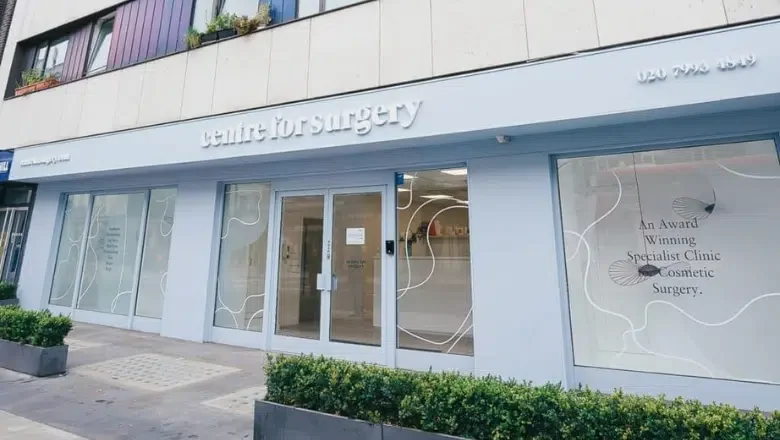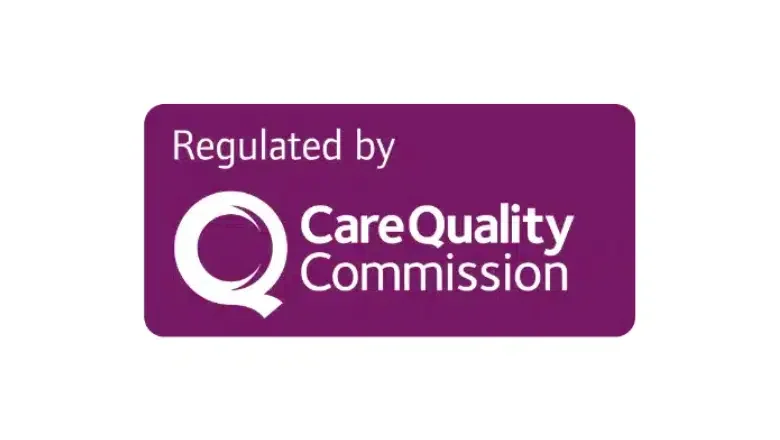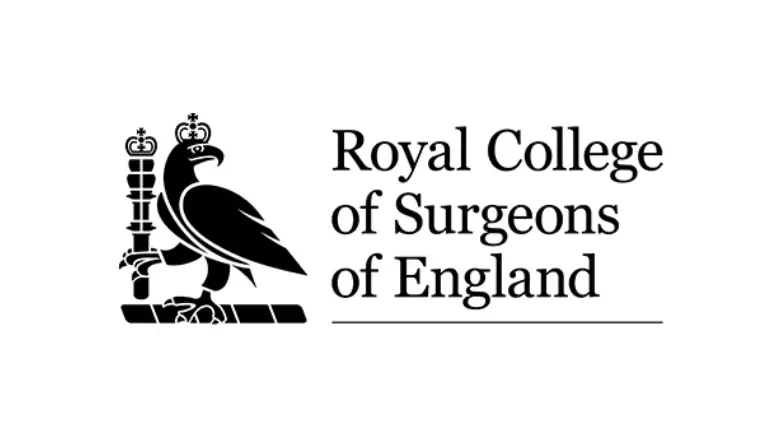Top Tips for Choosing Breast Post-Surgery Support Garments
Compression garments, commonly referred to as post-surgery support garments, are worn after surgery to facilitate the healing process. These garments are a critical component of postoperative care after breast surgeries, such as breast reduction, breast lift, breast reconstruction, and breast augmentation.
Following your surgeon’s instructions carefully and utilizing proper compressive therapy, including wearing support garments, is just as crucial as the surgery itself for achieving optimal outcomes. Adequate aftercare is imperative!
Why do I need to wear a support garment after breast surgery?
Wearing compression garments after breast surgery is highly recommended for several reasons. Firstly, it aids in the healing process of the breasts, reduces post-operative pain, and minimises swelling. This is particularly important for procedures such as breast reduction/lift, breast reconstruction, and breast augmentation, where the breast tissue has been manipulated and needs support during the healing phase.
Compression garments also help stabilize the implants and keep them in their proper position during breast augmentation. This is crucial in ensuring the desired outcome and reducing the risk of complications.
For breast reduction or implant removal surgeries, wearing compression garments can prevent excess sagging, which can occur due to the removal of tissue or implants. The compression garment helps to provide support and maintain the shape of the breasts during the healing process, resulting in a more aesthetically pleasing outcome.
What are the benefits of using a compression garment following breast surgery?
The use of compression garments following breast surgery offers numerous benefits to patients. One of the most significant advantages is reducing post-operative swelling. Excessive fluid build-up in and around the breast tissue is common following breast surgery, and compression garments can help by compressing the breast and surrounding structures, reducing swelling.
Compression garments also reduce the risk of bruising around the breasts. During breast surgery, disruption to blood vessels can result in visible bruising. However, by compressing the vessels around the breast, the migration of red blood cells towards the epidermis is reduced, resulting in fewer visible bruises.
Compression garments designed for the breasts also promote circulation, decrease swelling around the breast tissue, and reduce the inflammatory process, resulting in less pain. By exerting adequate pressure on the breast, compression garments can also help in reducing post-operative pain.
Another benefit of compression garments following breast surgery is reducing post-operative sagging of the skin after gynecomastia surgery. After removing excess fat through liposuction, excess skin tissue is often left behind. Compression garments provide healthy support to the skin and hold it in place with the underlying breast structure, reducing sagging and accelerating breast recovery.
Compression garments also function as a physical barrier protecting the breast skin from infections. They facilitate effective circulation and transfer of antimicrobial cells to the site of possible infection, helping to get rid of pathogens.
For plastic surgical procedures like breast augmentation surgery with implants, compression garments help to maintain the changes in size and shape of the breasts after surgery. Compression bras ensure that implants are kept in place, retaining the post-operative changes in the breast’s shape and size.
The use of compression garments can reduce the risks associated with poor circulation, such as clot formation and DVT. By squeezing peripheral blood vessels and promoting circulation, compression garments can reduce the risk of clot formations and migration, leading to devastating consequences like pulmonary embolism.
Compression garments can also help in softening and breaking down keloids that may form due to the accumulation of excess scar tissue in the healed wound of the incision site. They also provide maximum post-operative comfort to the implants.
FAQs about Compression Garments after Breast Surgery
How long do I need to wear a compression garment following breast augmentation surgery?
The length of time you will need to wear a compression garment following breast augmentation surgery will depend on your surgeon’s recommendation and your individual healing process. However, typically, most surgeons will recommend wearing the compression garment for around four to six weeks after the surgery.
During this period, the compression garment will help to support the breasts and minimize swelling, reducing post-operative pain and discomfort. It will also help to stabilize the implants and maintain the desired shape and size of the breasts.
It is essential to follow your surgeon’s instructions on wearing the compression garment as instructed. Removing the garment prematurely can lead to complications such as increased swelling, discomfort, and a longer recovery time.
After the recommended period of wearing the compression garment, your surgeon will likely advise you to continue wearing a supportive bra for several more weeks or until they have fully healed.
How do compression garments help after breast surgery?
Compression garments are specially designed garments that apply gentle pressure to the body, helping to improve blood flow, reduce swelling, and promote healing after breast surgery. These garments are an essential component of post-operative care following breast surgeries, including breast augmentation, breast reduction, breast lift, and breast reconstruction.
After breast surgery, the breast tissue experiences significant swelling and inflammation. This swelling can cause discomfort and pain and can also delay the healing process. Compression garments can help alleviate swelling by compressing the breast and surrounding tissues, promoting lymphatic drainage, and increasing blood flow.
Compression garments also help support and stabilise the breast tissue. This is particularly important in procedures like breast augmentation, where implants are used to add volume and shape to the breasts. Compression garments can help to prevent the implants from shifting or moving, ensuring they remain in their optimal position during the healing process.
Compression garments can also reduce the risk of bruising and haematoma formation in the breast tissue. By applying pressure to the vessels around the breast, the migration of red blood cells towards the epidermis is reduced, resulting in fewer visible bruises. This is particularly important in breast reduction or lift surgeries, where the breast tissue has been manipulated, and there is a greater risk of bruising.
Another benefit of compression garments after breast surgery is that they can help to reduce discomfort and pain. The pressure applied by the compression garment can help to reduce nerve sensitivity, which can alleviate pain and discomfort in the breast tissue.
Compression garments can also help to prevent complications like infection and seroma formation. The gentle pressure applied by the compression garment can help prevent fluid accumulation in the breast tissue, reducing the risk of seroma formation. Additionally, compression garments act as a physical barrier, preventing bacteria from entering the incision site, reducing the risk of infection.
What happens if I don’t wear my compression garment after breast surgery?
Wearing a compression garment following breast surgery is an essential part of post-operative care, and not wearing one or stopping wearing one too soon can lead to several complications and delayed healing.
One of the most significant risks of not wearing a compression garment after breast surgery is the risk of implant displacement. For breast augmentation surgeries, compression garments help to stabilise the implants and maintain their position while the breast tissue heals. Without proper support and stabilisation, the implants may shift or move, resulting in an unsatisfactory outcome that may require revision surgery.
In addition to implant displacement, not wearing compression garments can lead to prolonged swelling and discomfort. The compression garment helps to reduce swelling, promote lymphatic drainage and increase blood flow, which speeds up the healing process. Without the support and pressure the compression garment provides, swelling can persist for longer, leading to discomfort and pain.
Not wearing a compression garment can also delay the final results of the surgery. The final outcome of breast surgery is not apparent until all swelling subsides. Without a compression garment to minimize swelling, it may take longer for the swelling to subside, delaying the final results of the procedure.
In surgeries like gynecomastia or explant surgeries, not wearing compression garments can result in excess skin being left over and associated sagging of skin around the breasts. Compression garments provide healthy support to the skin and hold it in place with the underlying breast structure, reducing sagging and accelerating breast recovery.
How to choose the best breast surgery support garment
Comfort
Comfort is a crucial factor when selecting a breast surgery support garment. Choose a garment that is comfortable to wear and doesn’t cause irritation or discomfort to your skin. Look for garments made from soft, breathable materials that won’t rub or chafe against your skin.
Compression level
The compression level of the garment is critical to ensure optimal healing and support. A garment that provides too much or too little compression can cause complications such as implant displacement or prolonged swelling. Consult with your surgeon to determine the appropriate compression level for your specific procedure.
Fit
The fit of the garment is crucial to ensure it provides the proper support and compression. Choose a garment that fits snugly but not too tight, ensuring it stays in place and doesn’t shift or move around. Look for garments with adjustable straps or closures to allow for a customisable fit.
Design
Different breast surgeries may require different types of support garments. For example, breast augmentation surgeries may require a garment with built-in cups to support the implants, while breast reduction surgeries may require a garment that provides full coverage and support to the entire breast area. Consult with your surgeon to determine the appropriate garment design for your procedure.
Quality
Ensure the garment is made from high-quality materials that will hold up over time and won’t lose its shape or compression level with wear. Look for garments made from durable, breathable fabrics that can be easily washed and maintained.
Are there any other methods to minimise breast swelling in addition to compression garments following surgery?
Yes, there are several other ways to reduce breast swelling following surgery, in addition to wearing compression garments. Here are some additional methods to reduce breast swelling:
Cold compress
Applying a cold compress to the affected area can help to reduce swelling and inflammation. Wrap a few ice cubes in a towel and apply it to your breasts for 15-20 minutes at a time, several times a day.
Elevation
Keeping your upper body elevated can also help to reduce swelling. Prop yourself up with pillows while resting or sleeping to promote drainage and reduce swelling.
Light exercise
Gentle exercises, such as walking or light stretching, can also help to reduce swelling by improving blood flow and promoting lymphatic drainage. Consult with your surgeon before starting any exercise routine.
Hydration
Staying hydrated can help to reduce swelling by promoting healthy blood flow and flushing out excess fluids from your body.
Medications
Your surgeon may prescribe medications to help manage pain, swelling, and inflammation following surgery. Follow your surgeon’s instructions and take the medication as directed.
What happens if my compression bra is too tight?
Wearing a compression bra that is too tight can lead to several complications and may hinder your healing process following breast surgery. Here are some of the potential consequences of wearing a compression bra that is too tight:
Impaired circulation
Wearing a compression bra that is too tight can restrict blood flow and impair circulation, leading to complications such as blood clots or deep vein thrombosis (DVT). Symptoms of impaired circulation include numbness, tingling, or a sensation of heaviness in the affected area.
Increased swelling
Compression bras are designed to provide gentle compression to reduce swelling and promote healing. However, if the bra is too tight, it may increase swelling by trapping fluid in the affected area.
Skin irritation
A compression bra that is too tight may cause skin irritation, chafing, or redness due to the constant pressure and friction against the skin.
Pain and discomfort
Wearing a compression bra that is too tight can cause pain, discomfort, or even bruising in the affected area. This can make it difficult to sleep, rest or perform daily activities.
Implant displacement
In breast augmentation surgeries, wearing a compression bra that is too tight can cause implant displacement. The pressure from the bra can push the implants out of position, leading to an unsatisfactory outcome that may require revision surgery.
If you experience any of these symptoms or suspect that your compression bra is too tight, speak with your surgeon immediately. Your surgeon may recommend adjusting the bra’s fit, replacing it with a different size or type, or discontinuing its use altogether. Following your surgeon’s instructions closely is essential to ensure optimal outcomes and a smooth recovery.
Timeline for wearing post-breast surgery support garments
The timeline for wearing post-breast surgery support garments will depend on your surgeon’s recommendation and your individual healing process. However, here is a general timeline for wearing post-breast-surgery support garments:
Immediately after surgery
You will typically be instructed to wear a surgical bra or compression garment immediately following breast surgery. This initial garment is designed to minimise swelling and provide support to the breast tissue. Depending on your surgeon’s recommendation, you may need to wear this garment for the first few days or up to a week.
The first few weeks post-surgery
After wearing a surgical bra or compression garment, your surgeon may recommend switching to a more comfortable and supportive compression bra. This garment is designed to provide the necessary support and compression to promote healing and minimise swelling. Depending on your surgeon’s recommendation, you may need to wear this garment for 4-6 weeks.
Several weeks after surgery
After the initial healing period, your surgeon may recommend switching to a supportive bra for several more weeks or until they have fully healed. The supportive bra should be comfortable and provide the appropriate level of support for your specific procedure.
Why Choose Centre for Surgery for Breast Surgery?
At Centre for Surgery, we offer world-class expertise in breast surgery, combining precision, safety, and natural-looking results in a calm, private and fully accredited medical setting. Our Baker Street clinic in the heart of London is purpose-built for plastic and reconstructive procedures, ensuring you receive outstanding care every step of the way—from your first consultation to your final follow-up.
Our team of highly trained specialist breast surgeons, including Dr Andreas Shiatis, bring years of experience in cosmetic and reconstructive breast procedures. Whether you’re considering breast augmentation, breast reduction, a breast lift, or reconstruction after mastectomy, our consultants focus on what matters most to you—personalised care, technical excellence, and long-term satisfaction.
We understand that choosing to undergo breast surgery is a deeply personal decision. That’s why we prioritise open communication, tailored treatment plans, and a supportive environment where your comfort and confidence are central to everything we do.
Don’t just take our word for it—here’s what some of our patients have said:
“From start to finish, the care I received at Centre for Surgery was exceptional. Dr Shiatis made me feel completely at ease and really listened to what I wanted. The results have exceeded my expectations.” – Sarah L.
“The Baker Street clinic is modern, discreet and welcoming. I was nervous at first, but the staff were so kind and reassuring. I’m thrilled with my breast lift—it’s given me back my confidence.” – Hannah R.
“I had a breast reduction with Dr Shiatis and couldn’t be happier. He’s a true professional, and the aftercare team were amazing. I felt supported throughout the whole journey.” – Emma T.
To learn more about our approach and why patients choose us, visit our About Us page. You can also meet the full Centre for Surgery team here.
We offer a range of flexible finance options to help make your treatment more affordable. For further insights into breast surgery and related topics, explore our regularly updated Plastic Surgery Blog.
If you have questions, our Clinic FAQs cover everything from consultation to recovery. And when you’re ready to take the next step, we invite you to book a consultation at our central London Baker Street Clinic.
📍 Centre for Surgery
95–97 Baker Street, London W1U 6RN
📞 Call us: 0207 993 4849
📧 Email: contact@centreforsurgery.com
Experience expert-led breast surgery, tailored just for you.










